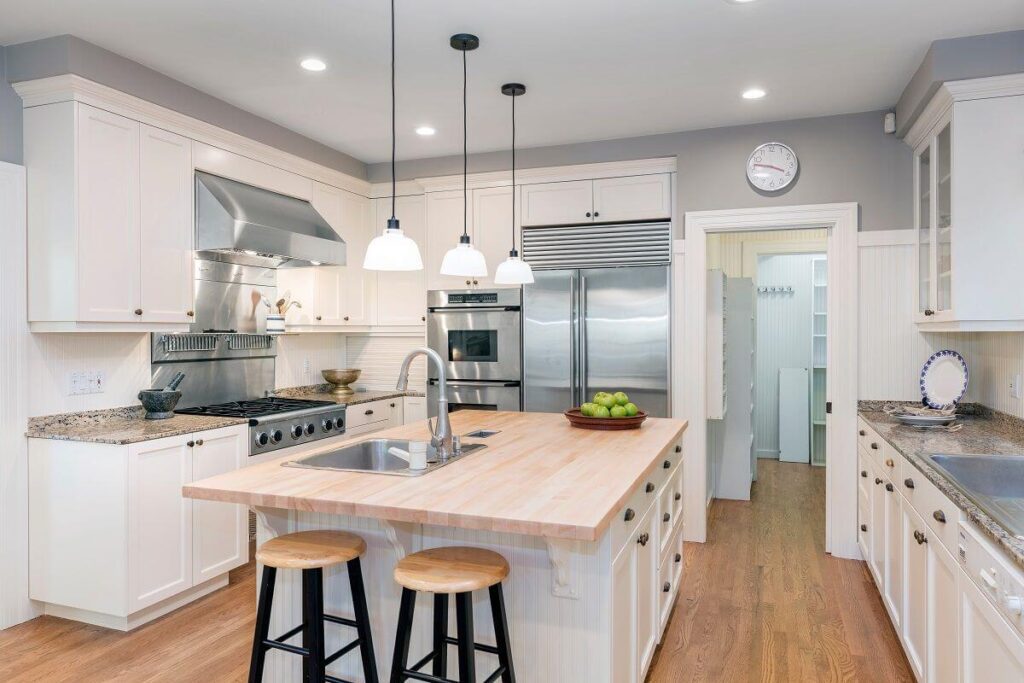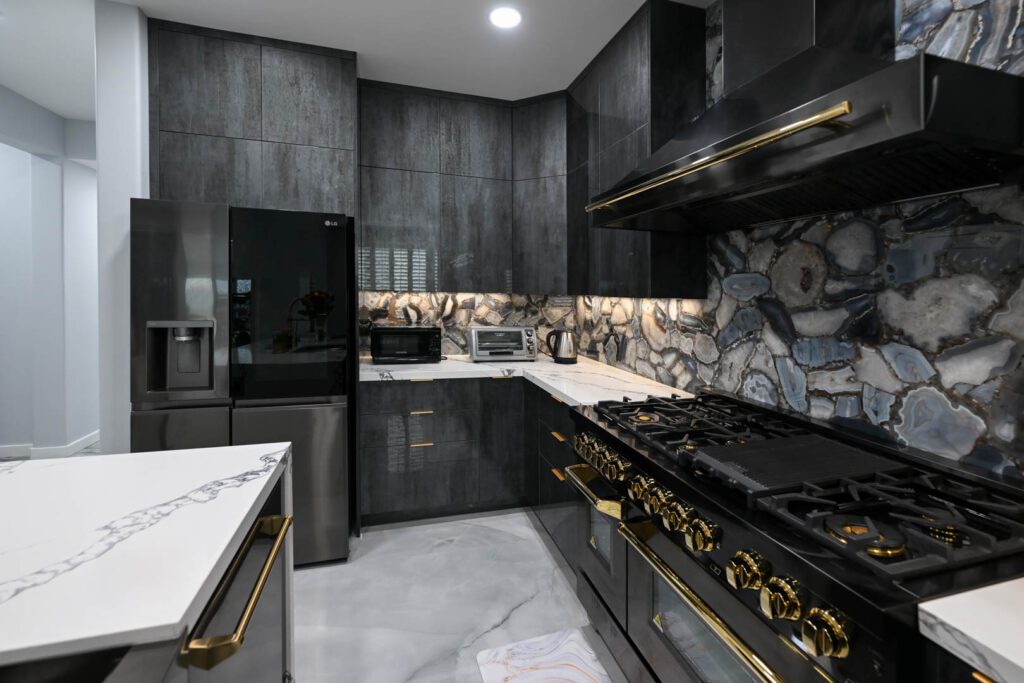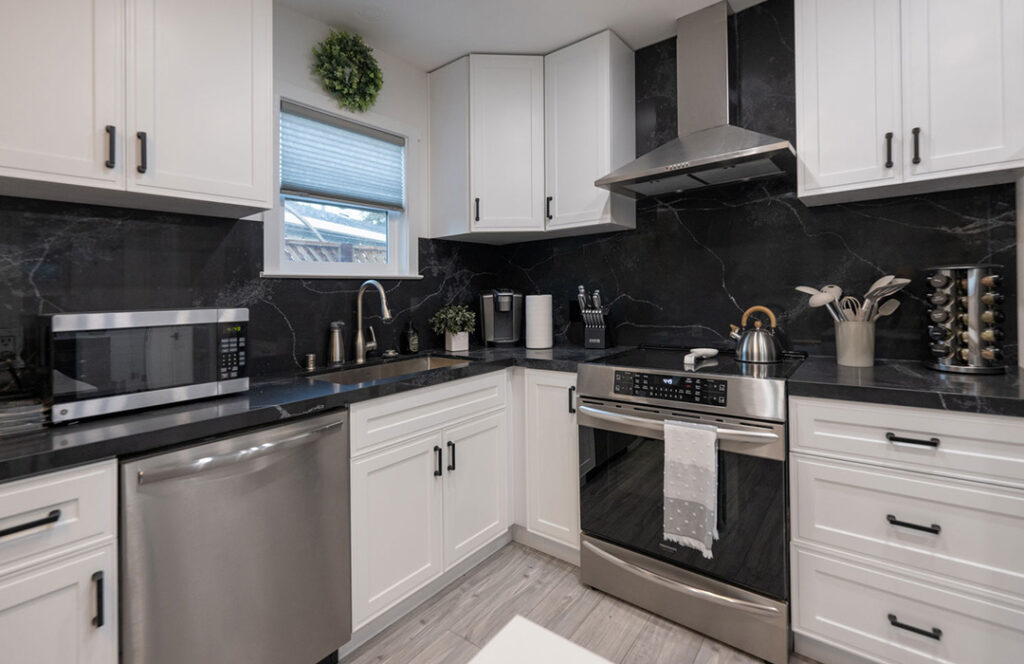Designing your custom kitchen island can transform your space into a functional and stylish hub. Learn essential tips from the pros to create a personalized island that suits your needs and elevates your kitchen’s aesthetic appeal. From choosing the right size and layout to selecting materials like granite and finishes, kitchen designers’ expert insights will guide you through the process seamlessly. Discover how to maximize storage, incorporate seating options, and enhance workflow efficiency in your kitchen with a custom island design that reflects your unique style preferences.
Understanding Your Kitchen Island’s Purpose
Determining Purpose
When designing your custom kitchen island, it’s crucial to understand its purpose. Will it mainly be used for food preparation, dining, or both? Think about the additional functions you need it to serve—whether storage space or seating options. Consider how the island fits into your overall kitchen design and layout, ensuring it aligns with your available inches.
A well-thought-out kitchen island can enhance your cooking experience by providing extra countertop space for meal prep. If you enjoy entertaining guests while cooking, a larger island with seating might be ideal. For families who use the kitchen as a gathering place, incorporating a dining area within the island could be beneficial.
Maximizing Functionality
When you’re planning your custom kitchen island, it’s super important to think about how you can use it in lots of different ways. One cool idea is to add shelves or cabinets right into the island so you can keep all your kitchen stuff organized and easy to reach. Imagine having a special spot just for your pots and pans or a place to hide away your toaster or blender when you’re not using them! Another thing to think about is the material you choose for the top of your island. You’ll want something that’s not only strong and durable but also easy to clean. Since you’ll be using your island every day, especially if you love cooking or baking, it’s gotta be able to handle all the chopping, mixing, and rolling that goes on in a busy kitchen. So, picking a tough material that can stand up to all that action is key.
Blending with Overall Design
Your kitchen designer can help ensure that your custom island seamlessly integrates into your existing kitchen layout. Coordinate the materials and colors of the island with other elements in your kitchen to create a cohesive look. Pay attention to lighting above the island to illuminate both the workspace and dining area effectively.
Key Information:
- Coordinating colors and materials creates visual harmony in your kitchen.
- Proper lighting enhances functionality and ambiance around the kitchen island.
Determining the Ideal Size and Shape
Measure Space
To design your custom kitchen island, begin by measuring your available space. This step is crucial to ensure that the island fits perfectly in your kitchen. By taking accurate measurements in inches or feet, you can determine the ideal size for your island.
Consider the traffic flow in your kitchen when deciding on the dimensions of your island. If you have a spacious kitchen, you might opt for a larger island to accommodate more functions like food preparation and seating. On the other hand, if space is limited, a smaller compact island may be more suitable.
Choose Shape
After determining the size based on measurements, consider choosing a shape that complements your existing layout. The shape of your custom kitchen island should harmonize with the overall design of your kitchen.
For instance, if you have a galley kitchen with limited space, an elongated rectangular-shaped island could be ideal as it maximizes functionality without occupying too much room. Alternatively, in an open-concept kitchen with ample space, a large square or circular island can serve as a focal point while providing additional storage and workspace.
Traffic Flow
When designing a custom kitchen island, think about how people will move around. Leave space on all sides for easy access. Consider the number of people in your kitchen and the available space. Choose a size and shape that suits your needs – rectangular for narrow kitchens, square or circular for open layouts. Design an island that looks great and works well for cooking and entertaining.
Choosing the Right Type and Design
Selecting the Type of Kitchen Island
When designing your custom kitchen island, it’s crucial to decide on the type that best suits your needs. You can opt for a stationary island if you seek a permanent fixture in your kitchen. On the other hand, a portable island offers flexibility, allowing you to move it around as needed.
It’s essential to consider how you typically use your kitchen space. For instance, if you enjoy hosting gatherings or cooking with family and friends nearby, a larger stationary island might be more suitable. Conversely, if you have limited space or prefer an adaptable layout, a portable island could be the ideal choice.
Matching Design with Kitchen Style
When delving into designing your custom kitchen island, ensure that the design complements your overall kitchen style. Whether your kitchen exudes modern aesthetics, traditional charm, or transitional elegance, selecting a design that harmonizes with these elements is key.
For example:
- If you have a modern kitchen with sleek finishes and minimalist accents, consider opting for a streamlined custom island design featuring clean lines and contemporary materials.
- In contrast, for a traditional kitchen characterized by warm colors and classic details like ornate cabinetry, incorporating decorative moldings or furniture-like elements into your custom island design can enhance its cohesion with the rest of the space.
Incorporating Unique Features
To elevate both the functionality and visual appeal of your custom kitchen island further, consider integrating unique features that cater to your specific needs. Features such as a waterfall edge—a seamless continuation of countertop material cascading down one side—can add sophistication to your design while concealing cabinet edges beneath it.
Consider incorporating useful elements such as built-in wine holders or custom storage options designed to store essentials like spices, cutting boards, and baking sheets conveniently accessible while using the kitchen island.
Choosing Quality Materials
Durable Countertop Options
When designing your custom kitchen island, it’s crucial to choose quality materials for the countertop. Granite, quartz, and butcher block are excellent choices as they are durable and can withstand daily use. Granite is known for its durability and resistance to scratches, while quartz offers a wide range of colors and patterns to complement your kitchen design. Butcher block provides a warm and natural look that adds character to your space.
To ensure longevity in your kitchen island, opt for materials like granite or quartz that are resistant to scratches caused by food preparation activities. These materials not only offer durability but also add an elegant touch to your kitchen island.
High-Quality Cabinetry Materials
Selecting high-quality cabinetry materials is essential when creating a custom kitchen island. Look for cabinets made from sturdy materials like recycled glass or stainless steel that can endure daily wear and tear while providing ample storage space. Stainless steel cabinets offer a sleek modern look, while recycled glass provides a unique eco-friendly touch.
When choosing cabinetry materials, consider options like stainless steel or recycled glass which not only provide durability but also contribute towards sustainability in your kitchen design.
Sustainable Material Choices
For an eco-friendly approach to designing your custom kitchen island, consider using sustainable materials such as zinc or recycled glass. Zinc countertops offer antibacterial properties along with a distinctive appearance that develops a natural patina over time. Recycled glass countertops come in various colors and styles, adding both sustainability and visual interest to your kitchen island design.
Opting for sustainable material choices like zinc or recycled glass not only promotes environmental consciousness but also adds unique characteristics to your custom kitchen island.
Optimizing Storage Solutions
Various Storage Options
To optimize storage space in your custom kitchen island, consider incorporating different storage options like drawers, cabinets, or open shelves. These elements not only enhance the aesthetic appeal of your island but also maximize functionality. By having a mix of these storage features, you can efficiently organize and store various kitchen essentials.
Customizing your island with specialized storage solutions such as pull-out spice racks or trash bins can further enhance its practicality. These additions help keep your island organized and clutter-free by providing designated spaces for specific items. For instance, a pull-out spice rack allows easy access to spices while cooking, enhancing convenience in the kitchen.
Tailored Storage Compartments
When designing your custom kitchen island’s storage compartments, it’s essential to tailor them based on your specific needs. Consider what items you frequently use in the kitchen and design compartments accordingly. For example, if you often bake, create a designated space for storing baking sheets within easy reach.
Customize storage areas for pots and pans to ensure they are easily accessible when cooking meals. By personalizing the clearance zone within cabinets or drawers to accommodate larger cookware items effectively, you can optimize the functionality of your kitchen island.
Incorporating Appliances Effectively
Strategic Placement
When designing your custom kitchen island, consider whether you want to include appliances like a sink, cooktop, or wine cooler. Place these appliances strategically to enhance workflow and minimize disruptions in the kitchen. For instance, positioning the sink near the dishwasher can streamline dishwashing tasks.
Proper planning ensures that essential appliances are within reach while cooking or cleaning up. Placing a cooktop on the island allows for convenient meal preparation without having to turn around constantly between different workstations in the kitchen. This setup is especially beneficial for homeowners who enjoy interactive cooking experiences with family and guests present.
Ventilation and Electrical Connections
For any appliances integrated into your kitchen island, ensure there is adequate ventilation to dissipate heat or odors effectively. Proper ventilation prevents overheating of appliances and maintains air quality in the kitchen space. Check that all electrical connections are correctly installed by a professional to guarantee safety when using electric-powered devices.
Incorporating gas-powered appliances like cooktops requires careful consideration of safety measures such as proper installation and regular maintenance checks. Homeowners should prioritize safety by following manufacturer guidelines for gas appliance use in their new kitchens. Ensuring compliance with local building codes regarding gas line installations is crucial for preventing potential hazards.
Enhancing Workflow and Functionality
Functional Work Triangle
When designing your custom kitchen island, it’s crucial to consider the functionality. Create a functional work triangle between the sink, stove, and refrigerator. This setup ensures an efficient workflow in the kitchen.
Designate specific zones on your kitchen island for various tasks like food prep, cooking, and serving. By organizing these areas effectively, you can streamline your cooking process and make it more convenient. For instance:
- Food prep area with easy access to utensils and ingredients
- The cooking zone is equipped with necessary tools near the stove
- Serving section for plating dishes before bringing them to the dining table
Additional Features for Usability
To further enhance usability in your kitchen island design, think about incorporating additional features such as a breakfast bar or built-in cutting board. These elements not only add functionality but also elevate the overall look of your space.
- A breakfast bar provides extra seating options for quick meals or casual gatherings.
- A built-in cutting board offers convenience during meal preparation without taking up extra counter space.
Incorporating these features will not only improve traffic flow in your kitchen but also create a more efficient workspace that caters to different needs seamlessly.
Lighting and Seating Considerations
Task Lighting for Functionality
When designing your custom kitchen island, it’s crucial to focus on task lighting. This type of lighting is essential for illuminating specific areas where tasks are performed. Installing appropriate lighting fixtures above the kitchen island ensures ample light for food preparation or cooking activities. For example, incorporating pendant lights can provide focused illumination while adding a touch of style to your kitchen space.
Consider using recessed lighting to create a visually appealing focal point above the island. These types of fixtures can offer ambient lighting that complements the overall design of your kitchen. By strategically placing tasks and ambient lighting, you can achieve a well-lit and functional workspace that enhances both aesthetics and practicality.
- Task lighting enhances visibility during food prep
- Pendant lights add style and functionality
- Recessed lighting creates ambient illumination
Seating Options for Comfort
Another essential aspect when designing a custom kitchen island is selecting suitable seating options for comfort and convenience. Before choosing seating options like bar stools or chairs, determine how many seats you want to accommodate based on your needs and available space in the room.
Bar stools are popular choices due to their versatility in various kitchen designs. They come in different heights, styles, and materials, allowing you to customize them according to your preferences. Alternatively, if you prefer chairs over stools, opt for comfortable yet stylish dining chairs that complement the overall aesthetic of your kitchen.
- Determine the number of seats needed based on available space.
- Choose between bar stools or chairs depending on personal preference.
- Customize bar stool height, style, and material to suit your design.
Balancing Form, Function, and Safety
Design Alignment
When designing your custom kitchen island, it’s crucial to ensure that its design aligns with the overall aesthetic of your kitchen. The island should complement the style and color scheme of the rest of the kitchen. For instance, if you have a modern kitchen with sleek lines and minimalist design elements, opt for a kitchen island with clean lines and contemporary finishes.
To further enhance the visual appeal, consider incorporating decorative elements such as corbels or decorative panels that match your cabinetry. These small details can tie the island seamlessly into the existing design scheme while adding a touch of elegance.
Prioritizing Safety Features
Safety should be a top priority when designing your custom kitchen island. Consider factors like rounded edges on countertops to prevent injuries from accidental bumps. Ensure proper ventilation around cooking areas on the island to prevent heat buildup and improve air quality in your kitchen.
Another essential safety consideration is choosing non-slip flooring materials around the island area to reduce the risk of slips and falls, especially in high-traffic zones like near sinks or stovetops. By prioritizing these safety features during the design phase, you create a safer environment for yourself and your family.
Striking a Balance Between Form and Function
A well-designed kitchen island strikes a perfect balance between form (aesthetics) and function (practicality). Selecting high-quality materials that are both visually appealing and durable is key to achieving this balance. For example, opt for quartz or granite countertops that offer both beauty and resilience against stains or scratches.
Incorporating functional features like built-in trash bins or recycling centers within the island enhances its utility while keeping unsightly waste out of sight. Remember to also consider creating an efficient work triangle by ensuring easy access between different points – sink area, stove/cooktop area & refrigerator – on all three sides of an ideal triangle configuration.
Final Remarks
In designing your custom kitchen island, they have learned that understanding its purpose, size, shape, type, and design is crucial. Selecting quality materials, optimizing storage solutions, incorporating appliances effectively, enhancing workflow and functionality, considering lighting and seating arrangements, and balancing form, function, and safety are essential steps in creating a functional and aesthetically pleasing space. By following these expert tips, anyone can transform their kitchen island into a centerpiece that not only enhances the overall look of the kitchen but also improves its efficiency and practicality.
For those embarking on this design journey, remember that attention to detail is key. Every decision made in the design process contributes to the functionality and appeal of the kitchen island. So take your time, consider all aspects carefully, and create a custom kitchen island that truly reflects your style and meets your needs perfectly.
Frequently Asked Questions
What factors should I consider when determining the ideal size and shape of my custom kitchen island?
When determining the ideal size and shape of your custom kitchen island, consider the available space, traffic flow in your kitchen, desired functionality, seating options, and how it complements your overall kitchen design.
How can I effectively optimize storage solutions within my custom kitchen island?
To optimize storage solutions in your custom kitchen island, incorporate deep drawers for pots and pans, install pull-out shelves for easy access to appliances or pantry items, utilize vertical dividers for trays or cutting boards, and consider adding a wine rack or spice storage.
What are some key considerations when incorporating appliances into my custom kitchen island design?
When incorporating appliances into your custom kitchen island design, ensure proper ventilation for heat-producing appliances like ovens or cooktops. Plan for electrical outlets if needed. Choose energy-efficient models that fit seamlessly with the overall aesthetic while maintaining ease of use.
Why is it important to enhance workflow and functionality in a custom kitchen island?
Enhancing workflow and functionality in a custom kitchen island ensures efficient meal preparation processes by providing designated zones for prepping, cooking, and serving food. By optimizing these aspects based on ergonomic principles such as work triangle efficiency (cooking area-sink-refrigerator), you create a more functional cooking space.
How can lighting and seating considerations impact the design of my custom kitchen island?
Proper lighting above the custom kitchen island enhances visibility during food prep tasks while also contributing to the ambiance. When considering seating options like bar stools or chairs at the counter overhang area of an island., make sure there’s enough legroom between seats & adequate lighting above them.
Transform Your Kitchen Space with Custom Kitchen Islands by Red White & Blue Construction!
Dreaming of the perfect kitchen upgrade in Lafayette, CA? Look no further than Red White & Blue Construction for expert custom kitchen island solutions! Specializing in creating tailored designs for seamless kitchen transformations, we personalize our services to match your unique style and preferences. Renowned for our meticulous approach to custom kitchen island planning, we are committed to bringing your kitchen vision to life, ensuring every aspect is meticulously planned and executed to exceed your expectations. Our sterling reputation across the Bay Area speaks to our dedication to precision, excellence, and unparalleled quality in every stage of the planning process.
At Red White & Blue Construction, we don’t just envision; we execute. With our comprehensive planning, transparent pricing, and unparalleled customer service, embarking on a custom kitchen island project with us guarantees a smooth and efficient transformation. Choose Red White & Blue Construction for all your custom kitchen island needs and kickstart your journey to a dream kitchen with confidence. Reach out to us today to get started!
Disclaimer
The materials available on this website are for informational and entertainment purposes only and not to provide advice. You should obtain advice concerning any particular issue or problem from a professional. You should not act or refrain from acting based on any content included in this site without seeking legal or other professional advice. The information presented on this website may not reflect the most current building developments. No action should be taken in reliance on the information on this website. We disclaim all liability concerning actions taken or not taken based on any or all of the contents of this site to the fullest extent permitted by law.





